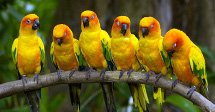Consider adding skylights, Solar Tubes, and adding new windows to bring more natural light into your home. You will save on your electric bills and offset the cost of these installations over time.
A simple and cost effective solution to lighting your home is to replace your regular incandescent light bulbs with energy saving CFLs or compact fluorescent lights. LED lighting is the safest and most cost effective over the long term, but if not affordable in the near term, CFLs are a suggested first step.Today, these bulbs are widely available in a variety of brands, shapes, styles, sizes and wattage for indoor and outdoor use. CFLs use 75% less energy for the same amount of light and last 10 times longer than old-fashioned incandescent bulbs. Here are some tips:
Choose the right type of compact fluorescent bulb for your light fixture With the variety, styles and sizes of CFL bulbs available today, be sure to select the type of bulb that matches your light fixtures. Certain styles work best, last longer and avoid burn out if placed and fitted properly.
How to properly install a spiral-type compact fluorescent light bulb To properly install or remove a spiral CFL, grip the unit by its plastic base and not by the spiral glass tube. The base of a CFL is typically comprised of white plastic. You can then install the CFL bulb into the fixture by turning the base clockwise. To remove the CFL, turn the base counter clockwise. By holding the base, you minimize the risk for shattering the glass tube.
CFL Recycling According to the U.S. Environmental Protection Agency (EPA), CFLs are safe and offer many benefits, primarily in saving energy and money, and can be safely disposed of in regular household waste. Also, because they produce less heat than regular bulbs, they’re safer to operate as they are cooler to the touch and that helps cut energy costs associated with home cooling. CFLs do contain a small amount of mercury, about 5 milligrams which is roughly equivalent to the tip of a ballpoint pen. In comparison, traditional thermometers contain 500 milligrams up to 3,000 milligrams of mercury. In the past decade, CFL manufacturers have reduced their use of mercury as technology continues to improve. Read more on CFLs and mercury.
At this time, neither the City nor the State of Hawaii offers any bulb recycling program and the closest bulb recycling centers are located on the mainland at a fee. However, Hawaii residents do have options:
The Home Depot will accept expired, unbroken CFLs as part of the retailer’s nationwide CFL recycling program. This free service is the first such offering made widely available by a retailer in the United States. Customers can simply bring in their spent CFL bulbs and give them to the store associates behind the returns desk.
In addition, residential customers can purchase the RECYCLEPAK® Consumer CFL Recycling Kit offered by Veolia Environmental Services, a mainland-based recycling company. In late 2007, Veolia reached an agreement with the U.S. Postal Service that allows the CFL kits to be shipped conveniently through the mail from Hawaii. Residents on all islands can pack their spent CFLs in the kits and drop them off at a U.S. Post Office or hand it to a U.S. Postal Service mail carrier. These pre-paid recycling kits can be purchased online at www.prepaidrecycling.com or by calling 1-888-669-9725. The cost includes all shipping and recycling fees. To highlight the newly available and convenient service for Hawaii residents, Hawaiian Electric gave away 1,000 CFL recycling kits in March 2008.
Another option for household recycling of spent CFL bulbs is offered by Houston-based Waste Management Inc., a leading provider of comprehensive waste and environmental services in North America. Through its Think Green from Home website, consumers can purchase a Compact Fluorescent Recycling Kit and a Household Straight Tube Recycling Kit that is delivered to your door. The CFL recycling kit holds up to 15 10-watt CFLs and can be mailed through the U.S. Postal Service. The straight tube recycling kit holds 7 T12 or 16 T8 tubes four feet or shorter in length. This recycling kit must be sent via UPS. All costs include shipping and recycling fees.
CFL Disposal Although there are disposal laws for large commercial users of fluorescents, at this time individual home owners can send their used CFLs to the municipal landfill since CFLs are considered “universal waste” and home owners are under no regulations. The EPA’s ENERGY STAR website provides a fact sheet on compact fluorescent lights which includes the EPA’s recommendation for proper CFL disposal. Home owners are encouraged to place used CFLs in two plastic bags and seal it before putting it in the trash. In case a bulb breaks in the trash can or dumpster after it is picked up, the chances of mercury impacting the surrounding area are reduced.
If a CFL bulb breaks, the EPA recommends you first open a window to allow the room to ventilate for 15 minutes or more and shut off air-conditioning. Carefully scoop up – don’t vacuum — all of the glass fragments and particles using stiff paper or cardboard. Place broken pieces in a glass jar with metal lid or in a sealed plastic bag and use sticky tape, such as duct tape, to pick up any remaining small glass fragments and powder. For hard surfaces, wipe the area clean with damp paper towels and place the used towels in the glass jar or plastic bag. For carpets, if vacuuming is needed after all visible materials are removed, vacuum the area where the bulb was broken. Remove the vacuum bag and put the bag or vacuum debris in a sealed plastic bag. Immediately place all clean up materials outside the building in a trash container for the next normal trash, and wash your hands. Get more tips here: State Department of Health Solid and Hazardous Waste Branch.
Properly used and disposed, CFLs are a good choice for energy efficiency and keeping our community and planet healthy.











